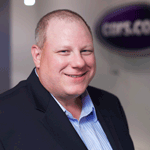For Bill Graff, senior vice president of Cerner Corporation’s technology services, data isn’t just numbers and statistics. Graff views his role as a storyteller, giving the $2.6 billion company unprecedented insight into its customers and itself, as he primes the next generation of IT leaders for success.
What is your main focus at Cerner and how are you fulfilling that role?
Bill Graff: My position at Cerner has me in a dual role, managing our client-facing application hosting and cloud infrastructure as well as our corporate IT services. My main focus across both of these domains is to ensure that my organization is delivering the technology necessary to move the business forward. From architecture and cost considerations to implementation and support models, I have to ensure that we’re working with technology solutions that best meet our clients’ needs without compromising stability, performance, security, or scalability.
How do you communicate effective technology solutions to the rest of the management team?
Graff: The true effectiveness of a technology solution can only be determined and communicated after looking at a combination of influencing factors spanning the entire scope of our business. Evaluating feature sets, security, scalability, and cost only begin to scratch the surface of what must be weighed when determining the effectiveness of a particular solution. All of this information is distilled to produce a risk/cost-versus-benefit analysis, which enables us to make informed decisions with our peers. We don’t select a new technology just because it has lots of bells and whistles; we introduce it after carefully weighing the costs and impact on the company.
IT budgets are playing a larger part in the expenses in the modern company. How do you know what new technology is worth the investment?
Graff: We work closely with Cerner’s financial teams and our peers across the company to establish businesses cases that provide a clear path to return on investment. We study how quickly we can get a return on investment and, ultimately, how it will benefit the business. Timeliness is also important. Sometimes new technologies have the potential to be too disruptive at a given point in time, so we will wait until we’re ready to implement the new strategy.
There is arguably more information at our disposal than ever before. When is data valuable and when is it a hindrance?
Graff: Data can be overwhelming if it’s not properly presented or if it doesn’t tell a story. To tell a story, data must be organized in a manner that allows the consumer to arrive at a conclusion without having to ask additional questions. Data may be valuable, but without proper storytelling and presentation, it’s just noise.
What are some challenges you face while migrating Cerner’s hosting services to the cloud?
Graff: In general, my role requires a balancing act between exploring new innovations and managing the core services we currently provide. While transitioning to the cloud will allow us to be more agile and responsive in the future, it doesn’t come without cost or increased risk. The applications and data we provide directly support health-care delivery, so we have to evaluate any new architecture platforms with a lot of scrutiny on the front end to ensure that we avoid negatively impacting our clients when trying to introduce new technology into our computing infrastructure. We’re well on our way in the journey to a cloud-driven computing model, but client serviceability will always set the pace.
What does the next generation of IT leaders look like? How are you working to mentor your team in pursuit of this vision?
Graff: The next generation of IT leaders will have to have a strong mix of business and technology backgrounds. IT departments are no longer relegated to the back room and now require strong relationships with business leaders across the company. I try to challenge my team to think and communicate in business terms rather than technical jargon, allowing them to better assess the needs of their stakeholders, and ultimately deliver technology solutions that go beyond simply meeting expectations to drive business value.
How important is it for the IT department to understand the core business? What does this look like at Cerner?
Graff: It’s critical that everyone in IT understands the core business. Operating without that perspective will almost certainly lead you to make decisions that ultimately work against your company’s mission. Almost everyone that comes on board at Cerner participates in an “Achieving Client Excellence” experience, which is clinical client site visit that immerses our associates in the day-to-day delivery of health care using IT. These individuals may not know every detail about the health care IT software Cerner provides, but they learn how the application suite is used to deliver care in a real setting, and gain an appreciation for our client needs in the three to five days that they spend with someone more experienced. Though this experience may not provide practical education for associates tasked with data-center operations or corporate IT delivery, it certainly helps them understand the criticality of the clinical workflows and data we support. Our software helps doctors, nurses, and other clinicians deliver care to patients who could easily be family members or someone you know. When IT associates view their role with that perspective, it hits close to home that your work has to be flawless.

